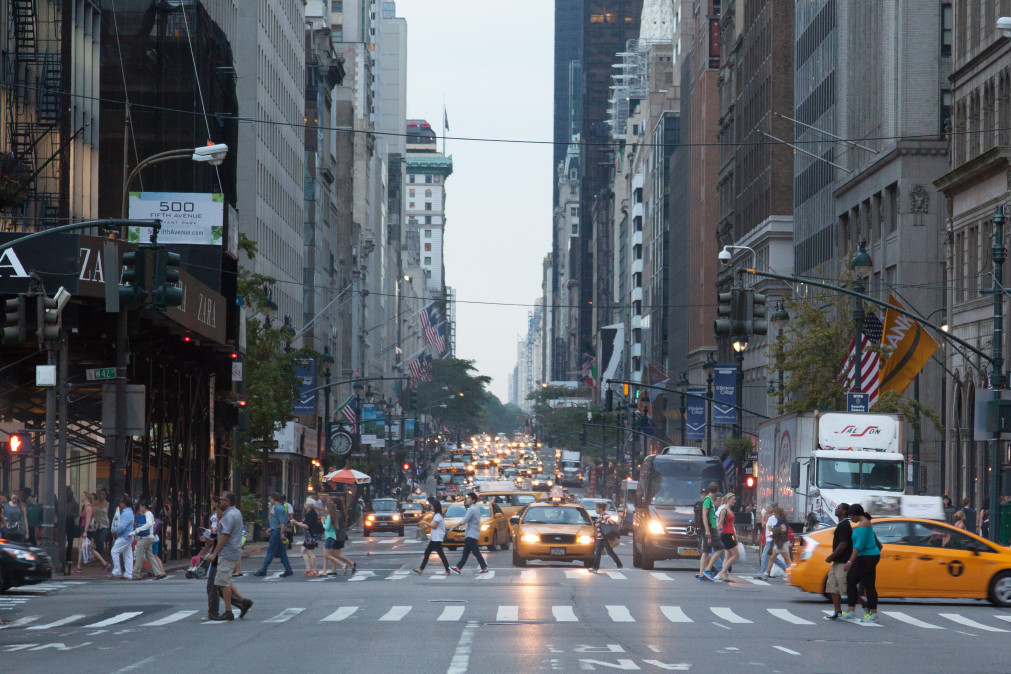The research is piling up: children of poor Americans are disadvantaged. Their neighborhoods, parents, schools, and lack of community engagement hold them back from entering adulthood with the same opportunities that rich kids have. And by “rich” and “poor,” I don’t refer to the top and bottom one percent. I mean the top and bottom thirds of all Americans.
Yesterday, AEI hosted Robert Putnam, Charles Murray, and William Julius Wilson, three of the most prolific researchers and writers on the topic of growing class gaps and the factors that feed that growth. Putnam, Harvard researcher and author of the recent “Our Kids,” opened the panel with a discussion of social capital trends among American families. American parents with relatively high incomes spend an average of $7,000 per year, per child, building social capital (music lessons, sports, tutoring, chess team, theater camp), while poor children participate in less than $1,000 worth of those activities. Children whose parents have higher incomes spend 45 minutes more per day with their parents than do children in the bottom third. Children whose parents attended college are more likely to be members of community organizations than children with less-educated parents. One highlight from Putnam’s work is important to remember here: since 1950, economic divergence has followed behind these social shifts and declines in civic engagement. In other words, we can’t attribute societal and family changes to growing income inequality.
“We’ve taken community involvement out of [children’s] hands,” Putnam asserted. “Increasingly the most important thing a child chooses is his or her parents. That’s fundamentally un-American.”
[pq]The opportunity gap has been growing for decades; overcoming it will take decades more.[/pq]
Putnam and Murray agreed that the disappearance of the two-parent home among poor Americans is the foremost contributor to a growing class gap. But Murray added that the opportunity gap is empirically accompanied by an ability gap (read Chapter 2 of “Coming Apart”). Assortative mating exacerbates this, in which individuals of similar education backgrounds marry each other. This is where Putnam and Murray parted ways, Murray placing much more importance on genetics and the non-shared environment that a child lives in (family and immediate community) than on the shared environment (school, extracurricular, and community activities). The shared environment, he asserted, can account for only 17 percent of a child’s outcome. Those “incremental” policies that Putnam would propose—tutoring and after school programs, community college subsidies, and day care provision—would have little effect on a child who has already been born to a low-income, single-parent home, argued Murray. Macro-culture and the zeitgeist shape child outcomes, not government programs. For this reason, Murray is pessimistic towards growing gaps: “I hope for a better outcome, I do not expect it.”
Considering that Wilson, a renowned sociologist, provided one of the earliest formal responses to Murray’s assessment of the welfare state in “Losing Ground,” his voice added necessary perspective on income inequality. Wilson’s work has focused on the disenfranchisement of American blacks through housing policy and poor neighborhood development (“The Truly Disadvantaged” is a must-read for anyone interested in urban development), as well as the challenges that low-income children face. Although racial barriers to success remain powerful, Wilson proposed that they represent less difficult barriers than they did in the 1950s. What we see now, he claimed, is a generation of black children held back by dysfunctional neighborhoods, bad schools, inaccessible elite colleges, low life expectancy, and single-parent homes. The income projection for poor black children is sloping downward in the coming decades. Conditions for that group of society are worse now that they were when Wilson wrote “The Truly Disadvantaged” in 1987.
Among ethnic groups, blacks witness the highest levels of income inequality in America (the group Gini coefficient in 2013 was abnormally high: 4.9). Black Americans also experience the greatest residential income segregation. Gentrification, Wilson argued, results in significant social relocation and contributes to this problem. (I think we can make smart policies to amend that). Low-income children from low-income neighborhoods are departing from mean school results, income mobility, and marriage rates too quickly. American society is bifurcating.
We have a mess on our hands. On this, the panel spoke unanimously. And when such a complex network of social factors determine a child’s prospects, the task of ensuring equal opportunity becomes formidable. The foundations for a life of flourishing in school, work, and community seem to be some indefinite elixir made up of just those things, and a mixture which the bottom third of Americans seem to have lost access to. We should worry about the rate at which rich and poor children are diverging from each other. Murray commented on this, claiming that we may find ourselves in a permanently segregated society in which civil culture has no place. Does Murray speak dramatically? Perhaps a dose of pessimism is the first step in making progress—Wilson and Putnam affirmed that.
Potential policy solutions seemed distant and indefinite in the panel’s concluding remarks. Amending class disparities is, as Murray described, “a moving target.” Beyond that, amending policies and measuring their results takes a long time. But that doesn’t mean we can’t recognize the challenge and begin to tackle it. The opportunity gap has been growing for decades; overcoming it will take decades more. I predict we’ll struggle through trial-and-error programs, campaigns to rectify the family, education reform, and loads of political scrap. And it will be worth it.


